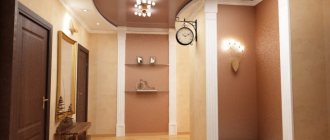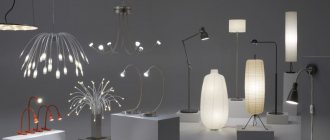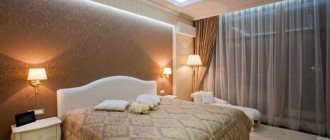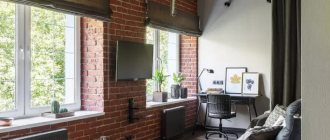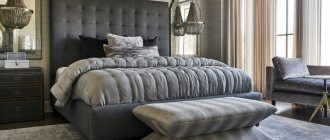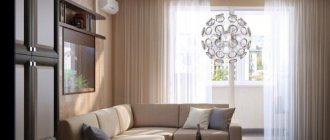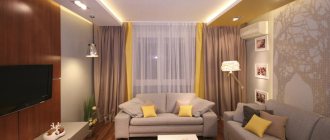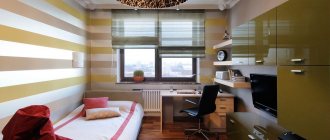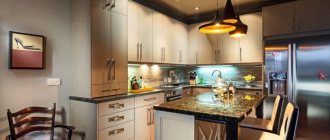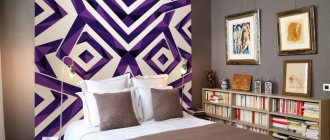Despite the fact that fashion trends in clothing, shoes or accessories change much more often than, for example, in the interior, the periodic introduction of new ideas in this area still occurs. Therefore, before you begin a major overhaul or update of the external design of a particular room, you should definitely pay attention to various new items regarding interior design. Today we propose to discuss the main lighting trends of 2022, which will allow your interior to remain fashionable and stylish for a long time. We will tell you further about what you should pay attention to and how to choose the right lighting sources for rooms of different functionality.
Lighting is divided into natural and artificial:
1. The first is street (daylight) light. It is impossible to stay indoors for a long time without it. Sunlight solves many problems.
- light is a natural antibiotic that disinfects the room. According to sanitary rules and building regulations, insolation (lighting by direct sunlight) of a living space should be at least 2 hours a day. All microdistricts and residential buildings in Russia are designed with this in mind.
- Natural lighting has a good effect on a person’s health and psychological state, increases immunity and reduces the risk of depression.
2. Second - all light sources inside the house. It is they and their proper placement that will help make the interior not only beautiful, but also comfortable for life (by this I mean the level of a person’s physical and psychological state). Let's talk about this.
Main types of lamps used
Most often, four types of lamps are used to illuminate an apartment:
- incandescent - the cheapest, but also the least profitable, since they produce only 5 - 8 Lm/W and operate for about 1000 hours;
- halogen lamps - have slightly better characteristics 10 - 12 Lm/W and a service life of 2000 - 4000 hours, but are extremely capricious regarding the condition of the surface;
- luminescent - capable of delivering about 25 - 50 Lm/W and lasting about 10,000 - 20,000 hours, depending on conditions, but they contain mercury as part of the gas-discharge medium;
- LED are the most economical, since they are characterized by a flux of 90 - 120 Lm/W and can last from 25,000 to 50,000 hours, but they also have the highest cost.
Where to begin? Features of modern lighting in the interior
Start with yourself and determining your own needs!
Think about what you like to do, find a suitable area for it. Always try to answer the question “Why?”, then errors will be minimal.
For example: “There will be a sconce here because on this wall I want to hang my favorite reproduction and highlight it with light. And this simple sconce design will be white, like the wall, because the main thing is the picture and the emphasis should be on it.”
Which option to choose depending on the type of ceiling
The type of lighting fixture depends on the materials from which the ceiling is made.
Concrete floor
For such a budget finish, all overhead models are suitable. You will have to abandon the mortise devices, since there is no room for them in the ceiling. The perimeter of the room can be illuminated with an LED strip if you install a plinth with a groove for this device. Concrete ceilings are one of the few materials that are not afraid of incandescent light bulbs.
If you want something unusual, you can make a lamp that imitates a window. To do this, attach a box to the ceiling, the bottom of which is covered with ice tape. The front part is covered with translucent glass or film, possibly with a pattern.
Stretch ceiling
In this case, any type of lamp is suitable, although mortise models are often preferred. But for such devices you will have to additionally install embedded platforms, which are available in several standard sizes. If the purchased lighting fixture is larger in width, length or diameter, the part is made independently, which complicates the process and affects the cost of the work.
Incandescent lamps are not used for suspended ceilings. But the range of lighting elements is still quite wide:
- Halogen . Power limitation is up to 35 W. It is better to choose models with an aluminum reflector, since a mirror one can transmit some of the light. As a result, an areola is formed, through which communications hidden in the interceiling space are visible.
- Energy saving (luminescent). These bulbs heat up less, but contain mercury and therefore require special disposal. For suspended ceilings without a chandelier, devices of any power are suitable. It is also necessary to take into account that these models are economical only when working for a long time. If you turn them on and off frequently, their service life will decrease. Wear accelerates because the electrodes are sprayed faster, and first the luminous flux is lost, and then flashing occurs and the device stops working. The same thing happens with frequent power outages.
- LED . These bulbs heat up the least, so the power for vinyl trim is not limited, provided that the driver does not allow the device to heat above 60°C.
Any LED panels with a reliable heat removal system and overheating protection are also suitable here. Very often this type of finishing is combined with LED strip - they create “floating” and “luminous” ceilings, false windows, lay out various patterns, use them with perforated canvases and photo printing.
Hanging plasterboard
Since when installing gypsum boards, an inter-ceiling space is formed, mortise models are often used. However, here too it is better to avoid incandescent lamps, as they can damage the material.
Unlike suspended ceilings, there is no need for inserts for spotlights. The strength of drywall allows them to be attached directly to the sheathing. The exceptions are heavy overhead models and track systems. They are fixed to the frame or to the concrete floor through a plasterboard finish.
LED strip is in demand here too. With its help, niches, ledges, and transitions between levels are highlighted. Thanks to such accents, the boundaries seem to be erased, all massive elements lose weight, and the space visually expands.
Multi-level structures
The type of luminaire for multi-tiered structures depends on the material used. Most often, several types of electrical appliances are installed. So, for the lower tier, they usually take recessed lamps or thin diode panels; the transition between levels is decorated with LED strip, which not only decorates, but also adds lightness and volume to the structure. An interesting solution when the entire protruding tier is turned into a luminous ceiling.
Lighting scenarios in the apartment
You can create several scenarios in one space:
- bright main lighting (chandeliers and any ceiling lighting).
- muted evening, when bright light is not needed (sconces, floor lamps, decorative lamps, hidden lighting).
- accent lighting for an area or object. When you need to highlight something (ceiling and wall lamps with directional light).
- festive (decorative lamps, garlands)
When we talk about lighting options, we assume that different lamps will be turned on from different switches. You can also use pass-through switches for convenience. You can turn on the lighting from two switches located at different ends of the room. Such switches are convenient to use in long rooms, corridors, and bedrooms.
Using dimmers will also help in creating different lighting scenarios. The invention, of course, is not new, but very useful. Using a dimmer switch, you can adjust the illumination from each lamp. It is important to remember here that not all lamps are dimmable. Most LED lamps are non-dimmable.
Thinking through scenarios and making electrical wiring is one of the first stages in repairs.
Types of ceiling lighting 2022
Classic ceiling lighting is a chandelier in the middle of the room, which can complement the style of the entire interior or, conversely, act as an accent item to which all attention will be focused. Modern chandeliers can have an unusual shape, original design or several levels of lighting. It all depends on the taste preferences of the owners of the room. However, with the development of technology and general attention to stretch or suspended ceilings, in addition to hanging chandeliers, built-in spotlights or lighting are actively used in design.
Spotlights perfectly highlight certain details and create the illusion of “light from the ceiling” or the “starry sky” effect.
As for the lighting, such lighting is an LED strip, which is located around the perimeter of the room or illuminates only some parts of it.
What to choose for the main lighting in the living room?
Chandelier
A chandelier is one of the types of pendant lamps designed to create shadow-free lighting.
The chandelier is the central element. It can become an accent in the interior, highlight a certain area, and act as the main source of lighting. For example, it will fit perfectly above the coffee table in the sofa area and become the main compositional element of the relaxation area. There is a truth and a minus: the possibility of rearranging furniture is limited by the fact that the chandelier organizes the space around itself.
In what interior is it appropriate to use a chandelier?
It is customary to emphasize the space with a chandelier, so it should be enough. Classic chandeliers are more vertically elongated, so they require high ceilings. Chandeliers in modern styles can be both horizontal and vertical.
If we talk about styles, designers are experimenting more and more and, along with understandable things, combining seemingly incompatible things! It is quite possible to find a classic chandelier in a concrete apartment, or, conversely, a modern geometric one - in walls with wide cornices and openwork moldings.
Using a classic chandelier in a traditional interior, you almost don’t have to worry about the result - it will probably fit well there! But if you want to make an unusual accent element, be careful! The rest of the interior in this case should become the background, here and there in small details only emphasizing the style of the chandelier.
The installation height depends largely on the situation. Usually at least 2.2 m from the floor, so as not to touch your head or hands. However, if the chandelier hangs above the coffee table in the living room, it would be appropriate to make it lower.
One chandelier in the center of the room will not solve the lighting issue. This is the main element that gives a lot of light, but with it alone the corners will remain in the shadows. Therefore, additional light sources are necessary.
Spot lighting (spots)
Spotlights are small lamps with directional light, having a certain angle of light propagation and radius of illumination.
Types of ceiling spotlights:
- built-in spots
- surface mounted lamps
- track systems
The peculiarity of the lamps is that they can be used both as main lighting and as accent lighting. The main thing is to choose the right lamp. Lamps come with different beam angles. For example, a conventional incandescent lamp has a scattering angle of 360 degrees, i.e. it shines in all directions and gives a general flood light. Halogen and LED spotlights with GU10 and GU5.3 sockets have a narrower angle. Most often it varies from 20 to 150 degrees. The range from 20 to 40 is suitable for local illumination of a painting or decorative elements. For basic lighting you need an angle of more than 60 degrees.
Spot and track lamps are appropriate in almost any interior, be it an interpretation of the classics, loft or minimalism. You can make them completely invisible or, conversely, accentuated.
If you use lamps as the main lighting, it is important to correctly calculate exactly how many lamps are needed and at what distance from each other they should be located. As a rule, the distance between spotlights is no more than 1.5 m. Of course, there are calculation formulas, but it is best to contact a lighting store, where the manager will help you determine the required power and number of lamps for your room.
Result:
Use a chandelier in a tall, large room in combination with additional lighting elements.
Spotlights are suitable for rooms with low ceilings, rooms with frequent rearrangements, and for accent lighting.
Does lighting have a style?
To answer this question, you need to take a closer look at the devices that help fill the room with light. The style directly depends on the characteristics of the lamps - shape, color, materials of manufacture. In classic interiors, chandeliers and sconces with crystal pendants are welcome. In modern ones, chrome-plated devices reign. Pop art is filled with bright, sometimes awkward lampshades. The interior of a country house in the Provence style will be “warmed” by textile lampshades. A loft is unthinkable without production spotlights, track systems and spots. Forged or wooden structures add country flavor. Art Nouveau is made even more impressive by intricate lines and shapes. The chosen style affects the number of light sources, their power and placement.
Wall lamps (sconces) – which ones and why?
Wall lamps are sources of additional lighting mounted in a wall or on a wall. There are two types - built-in or overhead (sconces).
Overhead sconces come in different designs:
- Carobaceae. The most familiar and widespread type of sconce.
- Wall (surface). Appropriate in cases where the room is narrow so as not to interfere with the passage. Most often used in corridors and staircases.
- Lighting for pictures.
- Stationary. Sconces that do not have additional scenarios illuminate only in one position.
- Adjustable. The design of such sconces has movable elements, by controlling which you can change the lighting.
- With reflected light. Such sconces give a soft, light light. Most often, wall sconces are found with reflected light.
- With directional light.
The type of sconce largely depends on the style of the interior and its purpose.
Switch the main light to the sconce and achieve a subdued, cozy atmosphere. They will help organize a work area, a place for reading, and highlight an interesting wall texture.
If you want to use a sconce in your work area instead of a table lamp, try an option that can be adjusted from the wall up to 60 cm so that you can control the light as needed.
Remember, the lamp should not interfere with the passage. If the room is narrow, use surface sconces that do not protrude too much. Or ditch them altogether and use accent ceiling lighting.
Any lamp needs space, so choose a place for the sconce so that it is not “crowded” on the wall.
Designer tips
- Lampshades for correcting general light are placed under the ceiling in the center of the room (for uniform dispersion). Instead of a chandelier, it’s easy to distribute the lighting on 4 walls and multi-level ceilings.
- Work areas should be evenly illuminated; it is not advisable to leave dark corners and deep shadow areas, even if they are rarely visited. It is better to combine working light - white with a yellow spectrum (check when purchasing in a store).
- For decorative lighting, colored lighting is suitable, for example, LED strip or cords, which can be used to lay out inscriptions or figures on the walls.
- Indoor plants need special phytolamps for full development, especially if they are inhabitants of the tropics and southern latitudes.
- Aquarium hydrophytes are illuminated with “white” or universal fluorescent lamps on a special cover, in combination with diodes and incandescent lamps with soft yellow light. They heat the surface of the decorative lid, so they are placed at a distance, and the bottom is lined with foil.
- With the help of perforated sconce lamps and ceiling lampshades, you can get a beautiful openwork shadow pattern. But choose a smooth and monochromatic finish so that the texture does not distort the intricate image.
- Local or local glow should favorably emphasize certain objects and interior details, to a certain extent enhancing or replacing the decor.
- In the work area where they read, cook, or study at the computer, local lighting is needed. The intensity should be beneficial to the eyes; this is the case when you should not skimp on your health.
A simple floor lamp, but it suits the surrounding interior
Important! When arranging any point, remember about a certain amount of heat generated - the cladding should not overheat to the point of ignition. Consider physiological norms - lack of lighting inhibits work activity and relaxes the optic nerve.
Built-in LED lamps are ideal for suspended ceilings
See also: Photo wallpaper for the kitchen: a new look at design
Kitchen and dining group
The kitchen area should have general lighting and work surface lighting. This is a set necessary for convenience and cooking.
In addition to uniform lighting with lamps, it would be nice to place a lamp above the dining group. This could be a pendant lamp or sconce.
The lamp should be installed in the kitchen at a height of 1.3-1.4 m from the floor (50-70 cm from the countertop).
If we talk about lamps above the bar counter, then the height here should be made a little higher - 1.6-1.8 m from the floor.
If the table is against the wall, you can use sconces. An interesting solution is a cantilever wall lamp with a reach of up to 1 meter in length. The installation height of such a lamp is also 50-70 cm from the tabletop.
If your room is small in size, do not overload it; use small lamps or lamps in light colors or with glass shades. Openwork lamps made of metal or wood can look impressive.
Many manufacturers produce series of lamps, in the same material, but in different sizes and shapes, and invite us to experiment and use our imagination. Combine in different combinations and hang at different heights!
Unusual light sources
Lighting methods must be combined with how the room will look, because this makes it possible to emphasize the necessary details and express style.
For example, nothing prevents you from placing a lamp or floor lamp near the chair for greater reading convenience.
In addition to spotlights, you can hang a chandelier in the bathroom, which will serve as a connecting link and become an unusual detail, blurring the boundaries in the apartment.
Use any ideas that will help you make any areas of space more expressive - furniture, ceilings, walls, etc. Accents on planes and borders look very interesting.
So, you can place several lamps in wall niches or multi-level ceilings.
Note! Loft style: the brutal look of your kitchen
If your kitchen has a pedestal that separates the work area from the rest of the room, feel free to install an LED strip at its base. This will not only outline its edges, but will also look great in the evenings.
Nowadays it has become very fashionable to illuminate furniture facades. This applies primarily to products made from natural materials that have an interesting texture.
Such techniques are very useful in studios where there are no partitions or clear boundaries. The entire room begins to look organic and at the same time has several zones.
What can you experiment with?
With wire!
Pendant lamps with textile braided wires look impressive. This can be a twisted wire or a simple round braided wire. The number of color options is huge!
Exposed wiring can be an interesting design element. Attach it to the surface of the wall or ceiling with clips for open wiring; if the cable is twisted, use insulators.
It is important to know!
If you use a ceiling lamp or chandelier in the center of the kitchen as the main lighting, do not hang pendant lamps above the dining room! They will "argue" with each other. The best solution would be sconces.
If the main lighting is spotlights, pendant lights above the dining room would be a great option!
Mistake #1: small chandelier lighting area
Firstly, we need to at least approximately calculate the area of the room that we need to illuminate. And based on this figure, guide your choice.
An ordinary small ceiling chandelier with 3 arms with 40-60 watt lamps is designed for 6-9 square meters.
Why is it important? Because there is nothing more valuable and important than health. Constantly being in a room with insufficient lighting is simply harmful
Okay, the bedroom, but such chandeliers are also chosen for the nursery.
There are special standards that you should follow. You can find out more about them by following the links Code of Rules “Natural and Artificial Lighting” and SanPiN 2.2.1/2.1.1.1278-03. Don’t be alarmed by such huge amounts of information (for example, we just need to choose a chandelier for the bedroom), just keep in mind that the average standard for residential premises is 100-150 lux.
And you should always keep in mind that:
- Dark walls or ceilings will reflect light worse, which means that with the same chandelier in such a room it will be darker than with white ceilings and walls.
- High ceilings “eat up” the light.
- Rough surfaces do not reflect light well and produce microshadows, which is why wooden houses often produce dim lighting. I wrote about this in an article about the interiors of wooden houses.
Well, if you want to approach the issue even more seriously, then use the DIALux program.
This error almost always goes along with the next one.
Corridor lighting
Let's consider several options. Let's say we have a wide, spacious hall with a width of at least 1.5 meters with a console table for keys or a banquette. For such a room, central lighting with a chandelier or overhead lamp is suitable. You can make sconces on the walls. Place them, for example, above a table or near a mirror. The installation height of sconces can vary from 1.6 to 1.8 m above floor level.
If your hallway is narrow and long, the best option would be to use recessed or surface-mounted accent lights.
Recessed lamps would be appropriate in a minimalist interior. These can be either spotlights or linear ones.
Advice! If you have a long corridor, you can visually make it smaller by making the far wall an accent wall and highlighting it. All bright or illuminated surfaces appear visually closer.
Selecting the style of the chandelier
When choosing a chandelier style, be sure to consider the overall interior design of the home, and also pay special attention to the shape and color scheme. Today the market offers a huge range of different lamps and chandeliers.
For example, classic chandeliers consist of several lamps, usually decorated with colored glass with bronze or metal frames - they are perfect for a dining room or living room.
Geometrically shaped lamps with elements made of metal, glass or plastic will fit perfectly into high-tech or modern style.
To create an eclectic interior, designers recommend complementing a traditional set of furniture with a fusion-style chandelier - this will help make the room original and bright. As for the shape, all chandeliers are conventionally divided into round and elongated.
Bedroom lighting
The bedroom can also have main lighting in the form of a chandelier or spotlights. Although it is often not done in order to initially create a cozy atmosphere for relaxation and sleep. The issue of lighting in this case is solved with decorative lamps. This could be sconces, spot lighting of individual interior elements, or hidden LED lighting. And, of course, night lights by the bed so that, for example, you can read a book.
A convenient height for installing sconces for reading can be about 100-120 cm from the floor.
Bedside lamps can be pendant, wall, or table. By the way, they can be placed asymmetrically - on one side of the bed there is a lamp, on the other there is a table lamp.
If we talk about pendant lamps, you can combine 2-3 lamps together. The recommended installation height for the lampshade is 90 cm from the floor. In this case, it’s a good idea to think of a small hook for fixing them so that they don’t sway from side to side when you accidentally touch them or open a window and the wind blows.
The main thing for bedside lamps is that you can turn them on without getting out of bed. Choose lamps with a switch on the body. Or make a pass-through switch - one at the entrance to the bedroom, the second above the head of the bed.
Selection of furniture
With regard to furniture, the issue can be resolved quite simply. Most often, it is enough to simply remove dark facades from the decor and install light-colored sets. It is necessary to take into account the property of light to propagate from top to bottom. Because of this property, all pieces of furniture that are more than half a wall in height should have a light texture. For example, tall and large items, such as massive sideboards and global wardrobes, should have a light background, but small tables, such as coffee or coffee tables, and armchairs can remain in a dark color.
in order to make the room brighter, it is recommended to choose compact, light-colored furniture
Designers know a few more secrets on how to use furniture to make a room brighter. In this context, they successfully use polishing, glossy facades, and mirror doors. Glass furniture will be an equally effective tool in this aspect. Its surfaces perfectly transmit light and allow it to spread freely in space.
Light in the nursery
A child’s room is a whole world with many tasks and functions - it is a bedroom, a playroom, and a workplace. There should be general lighting in the form of a chandelier or spotlights, a sconce by the bed (or pendant lamp), a table lamp, and possibly some other additional decorative lighting.
It is advisable to choose a sconce by the bed in the nursery with a power button on the body and a rotating one so that you can adjust the direction of the light. The installation height of the sconce is at least 50 cm above the bed.
Objectives of decorative lighting
Decorative lighting does not replace the main one - it becomes a stunning addition. The main goal of designers is to make the design of rooms more expressive.
It is important not to overdo it when implementing ideas. You should immediately decide what is best to highlight with light: walls, decorative elements or furniture.
You can combine different lighting effects in one room. Dynamics, color, shimmer - winning solutions for creating a unique interior.
Beautiful lighting in the room
Shower and toilet
In addition to general lighting, it is also good to have mirror lighting in the toilet. This could be a sconce or lighting mounted in a mirror. Its main purpose is to shine light on the face without creating cast shadows. Therefore, it is good if the sconce has a general flood light or with the ability to rotate the lampshade.
Interesting solutions can be obtained with LED backlights. It is only important to remember that it makes sense to highlight something beautiful. This could be a wall made of an unusual material (for example, stone, wood or relief) or a separate interesting element on the wall.
When choosing lamps for wet rooms, you must also look at the level of protection against moisture. It is designated IP44, where the first is protection against penetration of solid objects and dust on a scale of 0-6, the second is the degree of protection from moisture on a scale from 0 to 8. More about this in our other post about the protection class of devices - here . If the lamp is marked IP44, it is suitable for wet rooms.
Rules for decorating a bright interior
In many residential buildings and apartments, owners are faced with the problem of insufficient natural lighting in the rooms.
The reasons may be different - the windows are too small, a large tree outside the window, small footage of the room, excess furniture, or windows that are directed to the north side.
Even without such obvious shortcomings, sometimes you just want to make the room as bright as possible.
A light color for the walls in the interior will help solve all these problems. Thanks to this solution, every corner of the room will reflect a significant amount of light entering it.
Of course, by decorating the room in white, you will achieve maximum results.
Looking through photos of light colors in the interior in popular magazines, you can be sure that any shade looks impressive. When choosing shades close to white, not only its qualities are conveyed, but also its psychological influence.
A person staying in a bright room feels a surge of energy, his mood rises, and the process of awakening in such an atmosphere is faster and more pleasant. Pessimistic thoughts occur less frequently.
Thanks to the ability of a light interior to expand space, even in a small room you will feel more free.
It is worth noting that for residents of our country, a small living space is quite common. For this reason, in recent years you can often find a light-colored bedroom or kitchen in the interior.
By following simple advice from designers, even a person inexperienced in these matters will qualitatively improve the appearance of their home. To prevent a bright room from looking boring and conservative, it can be supplemented with various decorative elements.
Who is a lighting designer and why is one needed?
It is very difficult to think through a lighting strategy on your own without special skills. At first glance, the task seems feasible, but in practice it is rarely possible to correctly implement ideas. Common mistakes:
- Incorrect placement of lamps.
- Failure to comply with lighting standards.
- Inefficient distribution of sockets and switches.
- Lack of a plan for linking lamps to switching groups.
It is also important to understand the types of lighting and the characteristics of electrical appliances. In order not to delve into these issues, it is easier to trust a professional.
The main task of a lighting designer is to properly organize lighting. A specialist must be familiar with colors, interior styles, lighting equipment, and fashion trends. When developing the project, he is also guided by the climatic nuances of the region.
The first stage of a specialist’s work is creating a concept. The lighting designer evaluates the characteristics of natural lighting, plans the location of lamps, and considers the type and number of devices.
A professional knows how to complete the job in accordance with norms and standards. It will help organize designer lighting that will bring comfort to all occupants of the rooms.
An example of successful room lighting design
